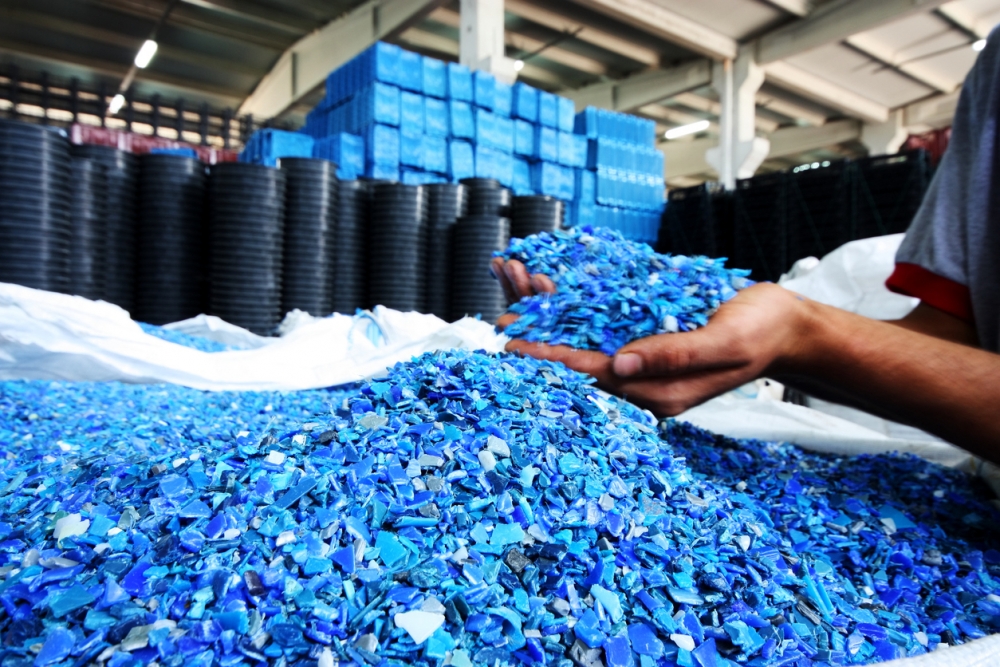
Old is the New New
UC Santa Barbara has joined a federally funded consortium aimed at keeping U.S. manufacturing competitive and clean through more efficient recycling, reuse and remanufacture of materials such as metals, fibers, polymers and electronic waste.
The Clean Energy Manufacturing Innovation Institute for Reducing EMbodied-Energy and Decreasing Emissions (REMADE), led by Rochester Institute of Technology’s Golisano Institute for Sustainability, was selected by the U.S. Department of Energy to enable technology that would reduce life-cycle energy consumption and carbon emissions associated with industrial-scale materials production and processing. At UCSB, the project will be administered by the campus’s Institute for Energy Efficiency (IEE).
“Extracting and processing materials costs money and energy and generates harmful pollutants and greenhouse gases,” said Sangwon Suh, a professor in the Bren School of Environmental Science & Management who specializes in industrial ecology. Suh also is leading UCSB’s work for REMADE.
The processing of widely used materials including steel and cement can account for a large proportion (roughly 20 percent) of global energy demand, Suh said. This can be reduced significantly, however, through reuse, recycling and remanufacturing.
“The Environmental Protection Agency, for example, estimates that recycling just one kilogram of aluminum cans can save 178 megajoules of energy, which is equivalent to about 1.4 gallons of gasoline,” he explained. “For some of the basic materials, the use of recycled material can save up to 95 percent of energy required for producing virgin material.”
The REMADE Institute involves the participation of currently approximately 100 members from academia, national laboratories, industry and affiliates, and aims to achieve a 50 percent improvement in overall energy efficiency by 2027. Among its five-year goals are: a five to 10 percent improvement in manufacturing material efficiency by reducing waste; a 50 percent increase in remanufacturing applications; a 30 percent increase in efficiency of remanufacturing operations; and a 30 percent increase in recycling efficiencies. REMADE also is targeting a 50 percent increase, to $21.5 billion, in sales for the U.S. manufacturing industry, as well as the creation of a next-generation recycling and manufacturing workforce.
UCSB’s role in REMADE is to develop and provide performance measurement tools as the institute works toward those clean energy and manufacturing goals.
“We will be measuring potential reductions in energy, materials and costs,” Suh said. “In order to quantify the potential benefits of recycling, we need to understand how much raw materials and energy are consumed, and how much greenhouse gas emissions are generated for producing and recycling various basic materials and chemicals.” By using various existing tools and harmonizing and filling the gaps in existing databases and data sets, he added, UCSB researchers can develop publicly accessible tools and databases to help producers and consumers understand the costs, benefits and trade-offs of recycling, reusing and remanufacturing.
“Professor Suh is a globally recognized leader in the science of technology assessment, and the role that his team is playing in the REMADE project is absolutely crucial,” said John Bowers, director of the UCSB IEE. “As a hub for cutting-edge science and technology with a proven record of industry-academy partnership, the Institute of Energy Efficiency is an ideal home for the REMADE project.”
The REMADE Institute will leverage up to $70 million in federal funding that will be matched by $70 million in private cost-share commitments from industry and other consortium members. These efficiency measures could save billions of dollars in energy costs and improve U.S. economic competitiveness through innovative new manufacturing techniques and small business opportunities, plus offer new training and jobs for American workers.
“With its $140 million in new resources, REMADE has the potential to bring the nation to the next level in materials and energy efficiency,” said Bren School Dean Steven Gaines. “The Bren School and Institute for Energy Efficiency are very proud to be part of this important endeavor. With our missions focused on environmental problem solving, the REMADE project couldn’t be more appealing to us. We look forward to welcoming interested industry partners to join our effort.”
REMADE is one of several regional institutes within the National Network for Manufacturing Innovation (NNMI), a federal initiative established in 2014 to bridge the gap between basic research and product development in key technology areas regarded as critical to U.S. manufacturing, and create manufacturing jobs in the country. UCSB is the West Coast hub for AIM Photonics, a SUNY Polytechnic Institute-led NNMI coalition geared toward accelerating photonics research for the purpose of creating technology with the increased data capacity, transmission speed and energy efficiency of light. UCSB also participates in PowerAmerica, a North Carolina State University-led NNMI consortium created to develop and commercialize wide bandgap semiconductors, which have the potential to develop smaller, faster, cheaper and more energy-efficient devices and machines, as well as more responsive and flexible power grids.



